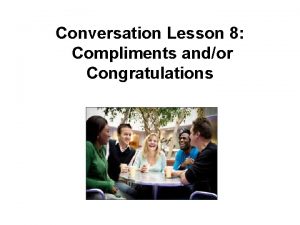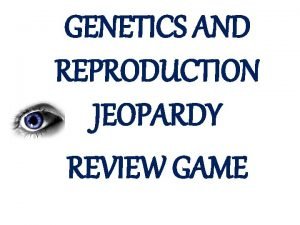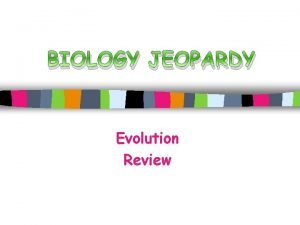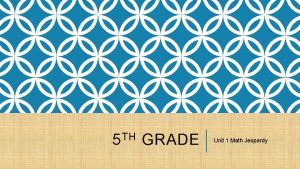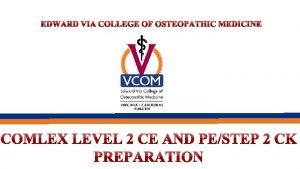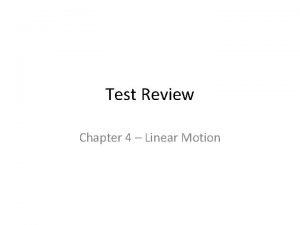Class Review Jeopardy With your hosthostess Your Classmate






























- Slides: 30

Class Review Jeopardy With your host/hostess, Your Classmate

Unit 1 Review Jeopardy Geographers Mother Earth 100 People Demography Multiple Choice 100 100 200 200 200 300 300 300 400 400 400 500 500 500

Geographers 100 To learn more about the Earth, geographers organize information according to what themes? a. latitude, longitude and movement b. location, place, human-environment interaction, movement and regions c. location, population and longitude d. region, population and place

Geographers 200 What do geographers learn by studying them of human-environment interaction? a. how cultural features define a location b. how people and the environment affect each other c. how people move from one region to another d. how regions differ from each other

Geographers 300 Which pair of basic questions guides geographers in their work? a. What is the climate? Why has it changed? b. When did the Earth form? What is it made from? c. Where are things located? Why are they there? d. Who lived where? When did they move?

Geographers 400 Latitude and longitude lines help geographers identify a. absolute location. b. the depths of oceans. c. the Earth’s distance from the Sun. d. The heights of mountains.

Geographers 500 Which of the following statements explains why there always distortions in a map? a. Maps are flat and the Earth is round. b. Maps are too small to hold enough information. c. Mountains or plains don’t show up on a map. d. Small towns are hard to represent on a map.

Mother Earth 100 Mountains, plateaus and plains are types of a. landforms. b. magma. c. plates. d. ridges.

Mother Earth 200 Materials created over millions of years from the remains of prehistoric plants and animals are a. fossil fuels. b. manufactured resources. c. renewable resources. d. synthetic resources.

Mother Earth 300 One result of the earth’s title is that the Earth has a. daylight. b. seasons. c. weather. d. winds.

Mother Earth 400 The Earth’s climate is affected by latitude, land forms and a combination of a. ice and sand. b. ocean depth and sea life. c. volcanoes and earthquakes. d. wind and water.

Mother Earth 500 The vegetation in a tropical rain forest includes mostly a. coniferous trees. b. grasses and shrubs. c. plants with shallow roots. d. trees, vines and ferns.

People 100 People tend to settle near places that have a. extremely cold or hot climates. b. few natural resources. c. high mountains. d. waterways that can be used for trade and travel.

People 200 Large numbers of people have moved from rural areas to urban areas because they want to a. give their children more opportunities. b. learn many languages. c. live life at a slower pace. d. raise animals.

People 300 People’s occupations, their behavior, and their beliefs area part of their a. climate. b. culture. c. government. d. technology.

Daily Double n How many points would you like to wager on today’s DAILY DOUBLE? ? ?

People 400 Why did many people leave Cuba in 1959 for the United States? a. The cities in their country were too small. b. They didn’t want to live under the new government. c. They knew that they spoke the same language. d. They preferred the warmer weather in the United States.

People 500 A natural resource is any material from the Earth that humans a. can find in tropical climates. b. can make. c. cannot recycle. d. use in meeting their needs.

Demography 100 How do demographers figure out population growth? a. by asking people how many children they have b. by comparing birthrates and death rates c. by counting all the new buildings d. by studying the level of a water supply

Demography 200 By comparing birthrates and death rates, demographers figure out a. population density. b. population growth. c. where people are likely to move. d. why people migrate.

Demography 300 To explain the reasons for immigrations, demographers use a. birthrates and death rates. b. compasses. c. life expectancies. d. the “push-pull” theory.

Demography 400 What is one reason why more than 81% of the Earth’s population lives in Asia, Europe and North America? a. These continents are covered by rain forests. b. These continents have large deserts. c. These continents have little rainfall. d. These continents have sources of fresh water.

Demography 500 Two important features of a culture a. language and religion. b. natural resources and landforms. c. population growth and climate. d. technology and writing.

Multiple Choice 100 Three examples of forms of government are a. constitutional monarchy, dictatorship and literature. b. democracy, capitalism and constitutional monarchy. c. monarchy, democracy and dictatorship. d. monarchy, extended family and population.

Multiple Choice 200 Communism, socialism and capitalism are examples of a. economic systems. b. educational methods. c. political systems. d. technological achievements.

Multiple Choice 300 Because of an increase in food supply and better medical care, the world’s population recently has a. made educational gains. b. rapidly increased. c. remained the same. d. slowly decreased.

Multiple Choice 400 Soil, water, and minerals are examples of a. b. c. d. Fossil fuels Natural resources Vegetation Sysnthetic resources

Multiple Choice 500 The social unit most responsible for teaching the customs and traditions of a culture is a. the army. b. the capitalists. c. the family. d. the government.

Class Review Jeopardy THANK YOU FOR PLAYING!!! Would you like a final Jeopardy question?

Final Jeopardy The “push-pull” theory is used by scientists to explain a. farming methods. b. how people fight. c. immigration. d. mountains.
 Ask your classmate
Ask your classmate Reported speech таблица
Reported speech таблица Classmate compliments
Classmate compliments Interview en past participle
Interview en past participle Fsa writing review jeopardy
Fsa writing review jeopardy What is the rule
What is the rule Genetics jeopardy review game
Genetics jeopardy review game Civil war jeopardy
Civil war jeopardy Natural selection jeopardy
Natural selection jeopardy World war 1 jeopardy
World war 1 jeopardy Place value jeopardy 5th grade
Place value jeopardy 5th grade Juliet on jeopardy
Juliet on jeopardy Verb tense jeopardy
Verb tense jeopardy Ap world history jeopardy review game
Ap world history jeopardy review game Ap world history jeopardy review game
Ap world history jeopardy review game Chapter review motion part a vocabulary review answer key
Chapter review motion part a vocabulary review answer key Ap gov final review
Ap gov final review Narrative review vs systematic review
Narrative review vs systematic review Prisma diagram example
Prisma diagram example Narrative review vs systematic review
Narrative review vs systematic review Nbome soap note example
Nbome soap note example Linear motion in class test review answers
Linear motion in class test review answers Give us your hungry your tired your poor
Give us your hungry your tired your poor How was today's class
How was today's class Putting a package together
Putting a package together Abstract class vs concrete class
Abstract class vs concrete class How to find mode of grouped data
How to find mode of grouped data Class i vs class ii mhc
Class i vs class ii mhc Abstract concrete class relationship
Abstract concrete class relationship How to get class width
How to get class width Stimuli vs stimulus
Stimuli vs stimulus


